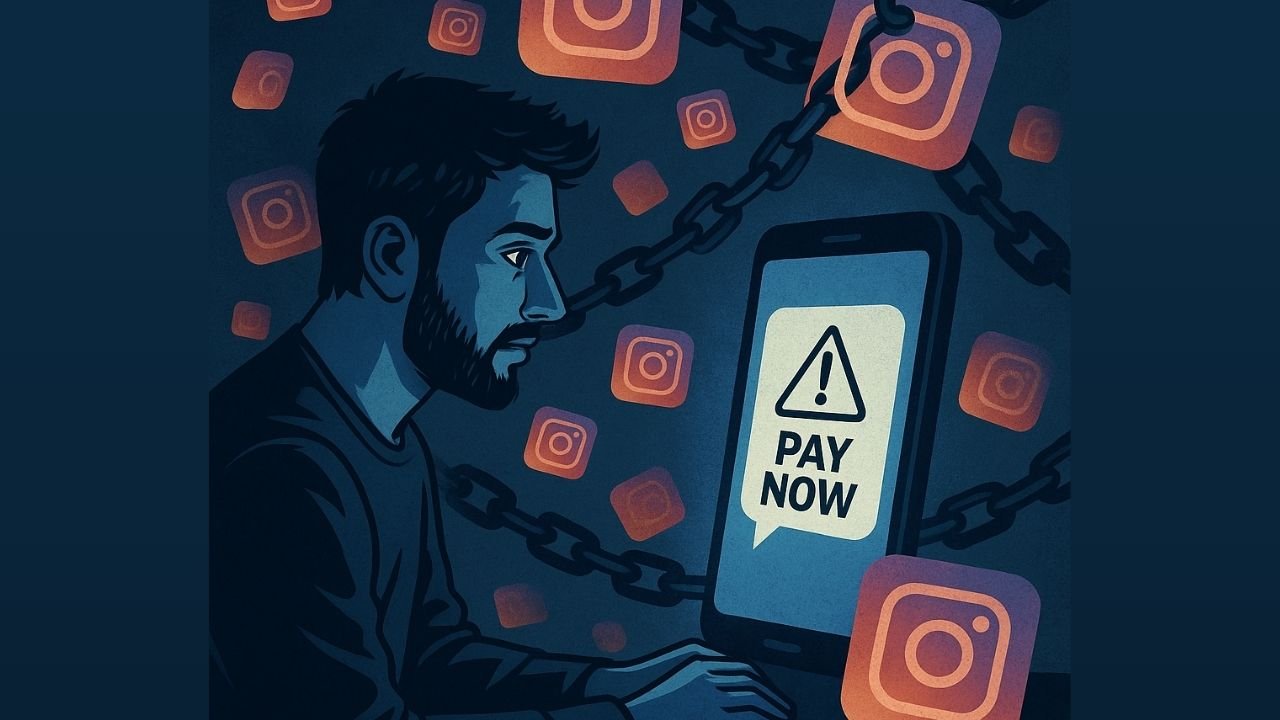Jabalpur, Madhya Pradesh — For 28-year-old software engineer and Instagram creator Azeem Ahmad, what began as a passion project in 2017 turned into a full-fledged digital business empire — until it was shaken by a new breed of cybercrime. Over the past year, Azeem has allegedly been blackmailed and extorted of nearly ₹50 lakh by cybercriminals who threatened to “strike” and delete his Instagram accounts if he didn’t comply.
With over 96 active Instagram accounts and a combined follower base of 57 million, Azeem manages one of India’s largest independently run social media networks. Through his firm, Whoopy Digital, he handles online ad promotions for brands such as Netflix, Amazon, Lenskart, and Blinkit — earning substantial monthly revenue. But that digital success soon turned into a weapon against him.
FCRF Launches CCLP Program to Train India’s Next Generation of Cyber Law Practitioners
A Threat in the Inbox
It began in March 2022 with an email claiming copyright infringement:
“The video you uploaded violates our content ownership rights,” it read. The sender warned of a “strike” — a formal complaint to Instagram that could lead to account suspension.
Azeem ignored it at first. But within days, his account with over two million followers was hit with four consecutive strikes, leading to its suspension. “It was devastating,” he recalls. “My team and I had built that account for years.”
He managed to recover the account by paying digital consultants nearly ₹10–15 lakh, but the incident marked the beginning of a relentless cycle of threats, extortion, and fear.
When Success Becomes a Vulnerability
Soon after the first attack, Azeem began receiving messages from multiple unknown handles and email IDs. The senders alleged that his promotional videos used “their content” and that repeated reports would lead to permanent account deletion.
“The threats became routine,” Azeem said. “They would message me on WhatsApp, email, even on Instagram itself. They’d say, ‘If you don’t pay, we’ll strike all your pages. You’ll lose everything.’”
At one point, a caller identifying himself as a “mediator from Pune” demanded ₹25,000–₹30,000 per strike to reverse the damage. Payments were demanded via UPI and even in dollars, totaling ₹50 lakh over several months.
The criminals, Azeem later realized, were exploiting Instagram’s automated copyright and content-reporting system — a mechanism originally designed to protect creators but now twisted to extort them.
The Dark Side of the Follower Economy
In the social media world, followers equal revenue — and for creators like Azeem, losing a popular account means losing not just income, but credibility. That fear has become a lucrative opportunity for cybercriminals.
Instagram’s content policy states that multiple copyright strikes can lead to a permanent ban. Four or more such strikes usually result in irreversible account deletion. Fraudsters exploit this loophole by flooding accounts with fake reports and then offering “mediation” services to restore them.
“It’s psychological warfare,” says Azeem. “They know how much our reputation and following mean to us. Every time I paid, they removed the strike. Then a new one appeared a few weeks later.”
Expert View: ‘Digital Blackmailing 2.0’
According to Professor Triveni Singh, cybercrime expert and former IPS officer, this case represents a new phase in online exploitation — one where digital reputation becomes the target.
“Social media platforms have evolved into economic ecosystems,” Prof. Singh said. “Followers are now currency, and criminals understand this. They weaponize fear — the fear of losing status, audience, and income — to extort creators.”
He described the pattern as “Cyber Blackmailing 2.0”, where scammers manipulate legitimate reporting systems to harass and coerce victims.
“These scammers often pose as mediators or copyright agents. They create a false sense of authority, then demand payment to fix the problem they themselves created,” he explained.
Prof. Singh urged digital creators to exercise caution and report such incidents through official channels.
“No legitimate platform ever demands money to remove strikes,” he emphasized. “Victims should immediately contact the cybercrime helpline (1930) or file a complaint at cybercrime.gov.in.”
A Growing Threat to India’s Digital Creators
Experts warn that Azeem’s case may be just one of many. As India’s creator economy expands — with influencers earning from advertising, brand collaborations, and digital endorsements — it has become a hunting ground for organized cybercriminals.
“The digital landscape has changed,” Prof. Singh noted. “Earlier, cyber fraud targeted bank accounts. Now, it targets digital identities — YouTube channels, Instagram pages, personal brands.”
Platforms like Instagram and YouTube face increasing pressure to tighten their content verification and reporting mechanisms. The opaque nature of their strike systems often leaves creators vulnerable and with little recourse.
“They Hold Your Digital Life Hostage”
For Azeem, the ordeal is both financial and emotional. “Each time a strike hits, it feels like watching your business burn,” he said. “I’ve built everything from scratch — followers, clients, trust. Losing that is not an option.”
He hopes his experience serves as a warning to others in the creator community.
“Social media fame can turn into your biggest weakness,” he says quietly. “Once they know what you stand to lose, they own your fear.”


